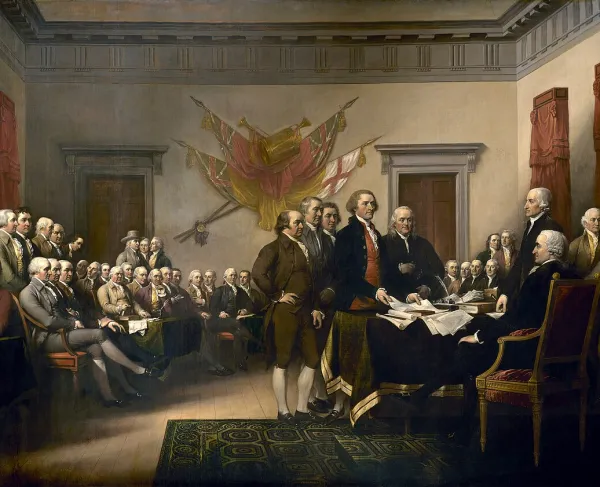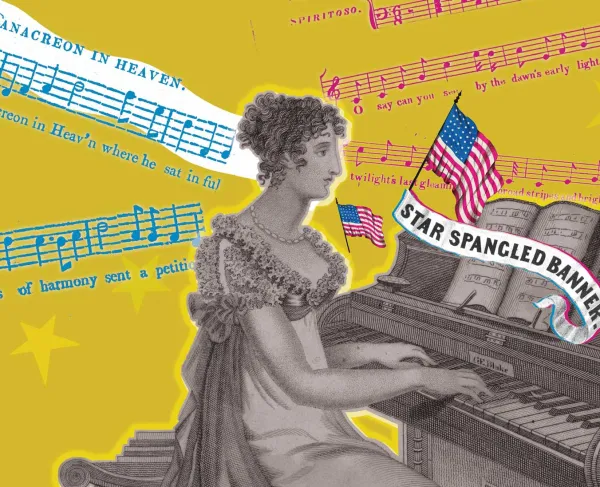Revolutionary War Strategy
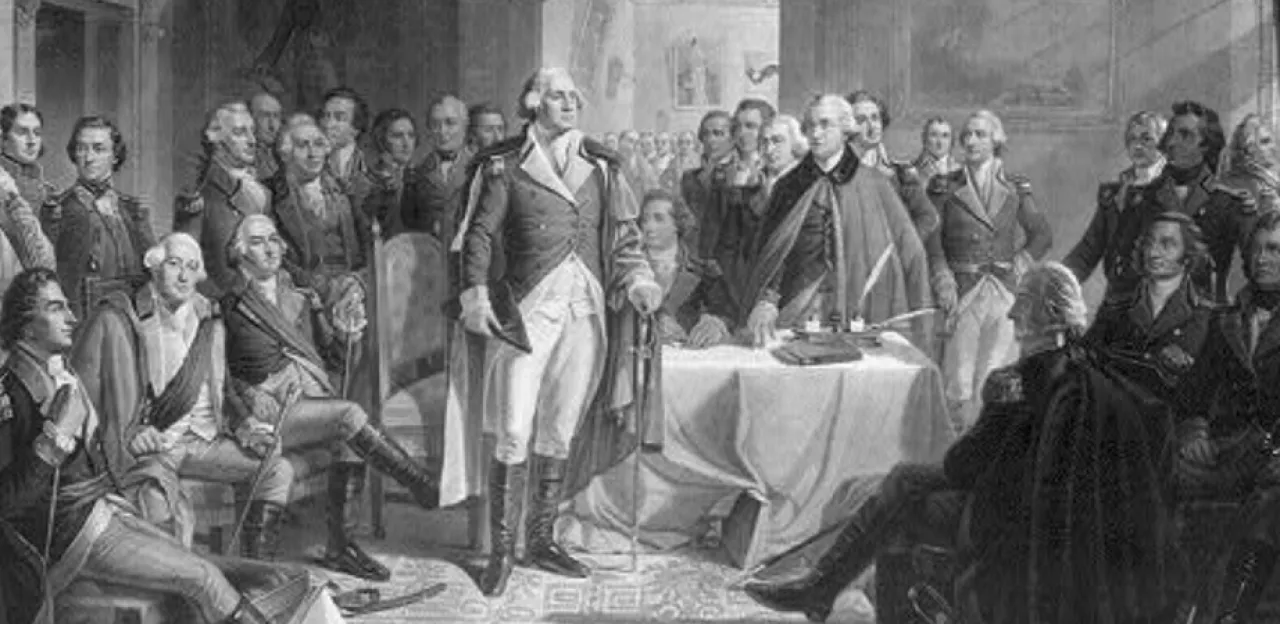
The American strategy was about obtaining legitimacy on an international level. While the Declaration of Independence was written to spell out American ideals and principles, its main purpose was to flash a rescue beacon to the international world. As the former colonies sought to throw off the yoke of British authority, there remained the real chance that no other country would look upon them as anything more than unruly British subjects. This is precisely what the British wanted, and what the Patriot leaders feared. Courting foreign nations to recognize the United States as a sovereign nation was the main goal of diplomats Benjamin Franklin and John Adams. From a diplomatic stance, without foreign assistance, the United States stood little chance of achieving true independence.
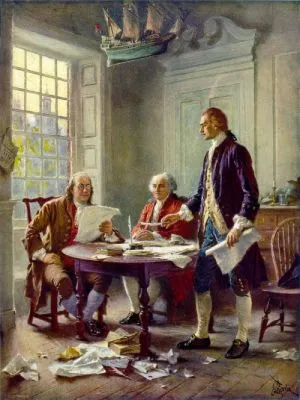
From a military standpoint, the Continental army was faced from the outset with a crisis in legitimacy of its own. Most soldiers were farmers and merchants, not professional soldiers. Most had no formal military training, and what munitions they owned were personal firearms and possessions. In the beginning, much of the army did not have uniforms. Only officers who could afford their own wore the distinguishing blue coats. Tactically, the army faced disagreements over how it should face off against the superior British army. Some officers had experience from the French and Indian War, while others were simply appointed into their ranks through political favors. Ultimately, the inexperience of the Continental army, and the lean on unreliable militia forces, threatened the existence of the American forces.
Following the disastrous string of defeats around New York in 1776, enthusiasm for the war effort evaporated among the Patriots. Stinging from these losses, the Continental officer staff had to revise their strategy. General George Washington desperately wanted to retake New York, but he now saw New Jersey completely overrun by British and Hessian soldiers. As his army dwindled in size, and the odds were stacked against them, he realized that the American army did not have to necessarily win battles to win the war. They just had to not lose it either. Strategy to ensure their survival was paramount. Above all else, so long as the Continental Army existed in the field, the Revolution was alive. The Fabian strategy, named after the Roman general who beat the rebel Hannibal through a war of attrition and continuous maneuvering, was reluctantly adopted by Washington to stave off a direct engagement with the full army forces of the British. Members of Congress, including John Adams, were critical of this decision because it was viewed as unheroic. In truth, Washington was an aggressive leader by nature, and often disagreed with many of his war council’s recommendations. Nonetheless, the American commander understood more than anyone that the army’s very existence was what kept the Revolution alive. If he gave into his impulses, and acted rash, it could jeopardize everything. The Americans would avoid a direct assault on the British unless conditions were overwhelmingly favorable. Short of that, they would prod and harass the British forces without coming into a major engagement.
Using this strategy to his advantage, Washington also developed spy networks to help gather intelligence against the British. He planted false information to throw them off. One of his greatest feats was convincing the British command that the Continental army was larger than it really was. In the winter of 1777, disinformation passed to British spies convinced the British command that the American forces were well over 12,000 strong at a time when in actuality they dwindled to about 1,000. The Culper Ring, headed by spymaster Benjamin Tallmadge, would play a decisive role in keeping the British guessing to what the Americans were capable of for the remainder of the war.
The Americans were finally assisted by the French in 1779. Prior to the navy arriving, the French had sent weapons and supplies, coin, and other provisions to assist the Americans. French officers were also eager to implant themselves within the conflict, and carve a piece of glory out for themselves. Many proved incapable or disastrous. The lone exception would be Marquis de Lafayette.
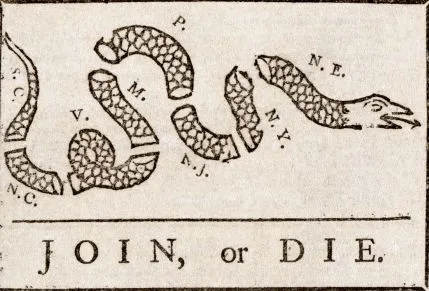
For the British, several strategies played significant roles in the eventual outcome of the war. The last thing the British wanted was a “continental Union” of the colonies. In 1775, the British sought to contain the rebellion within Massachusetts. By isolating them, the hope was there would be little enthusiasm in the remaining colonies to support the insurrection of a few unruly colonists. They completely underestimated how unpopular British taxation, and the notion of standing armies were to American colonists throughout North America. As the war progressed, the plan to isolate Massachusetts extended to the entirety of New England. Parliament, headed by Prime Minister Lord North and Secretary George Germain, sought to take control of the Hudson River in New York state, effectively cutting off New England from the rest of the continent. Had they been successful with this plan, the delegates of the Continental Congress might have fractured and slipped back into regional factions looking to make a deal favorable to London. The British also vied for control of Canada in order to break up any attempts of American forces to seize British territories, and push Canada into rebellion.
In reality, the British were fighting an insurrection that often broke traditional rules of war for the eighteenth century. To complicate matters, British troops were fighting on foreign soil. Many British and Hessian commanders had to scramble to navigate uncharted country. Complicating matters more, their enemy was often hiding in plain sight among the population. It was not uncommon for pockets of rebel resistance or militia to dissolve back into local towns and villages after attacking British forces. Though there were major engagements between two opposing armies in the field, many more battles devolved into hostile guerrilla warfare. Despite Loyalist sentiments among portions of the colonies, the British army was rarely viewed favorably among colonists, including Loyalists. Foraging and plundering local supplies left many colonists resentful of the foreign occupiers.
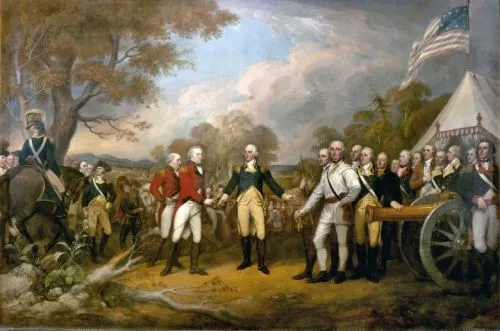
After the surrender of British general John Burgoyne at Saratoga, NY in 1777, the British decided to change their strategy and open an offensive campaign in the southern states. The hope was to draw Loyalist support and effectively cut off the South from the North. The British had some initial success, but the battles in the South quickly eroded what gains the British had made. Bitter, partisan warfare broke out among Loyalist and Patriot citizens. The addition of France into the war in 1778 also contributed to the change in British strategy. The French navy threatened the British merchant colonies in the Caribbean, leaving Parliament no choice but to redirect badly needed military reinforcements to the Caribbean. By 1781, the British were stretched dangerously thin in North America: a reluctant British commander held up in New York City’s central command post, and General Charles, Lord Cornwallis running out of gas in the Carolinas did not help crumbling support among King George III’s ministers in Parliament. Had Yorktown not ended in defeat, who knows if the British could have rallied, regrouped, and struck a fatal blow to the American insurrection? By that point, it seemed the only person who thought a British victory remained possible was the king himself.
